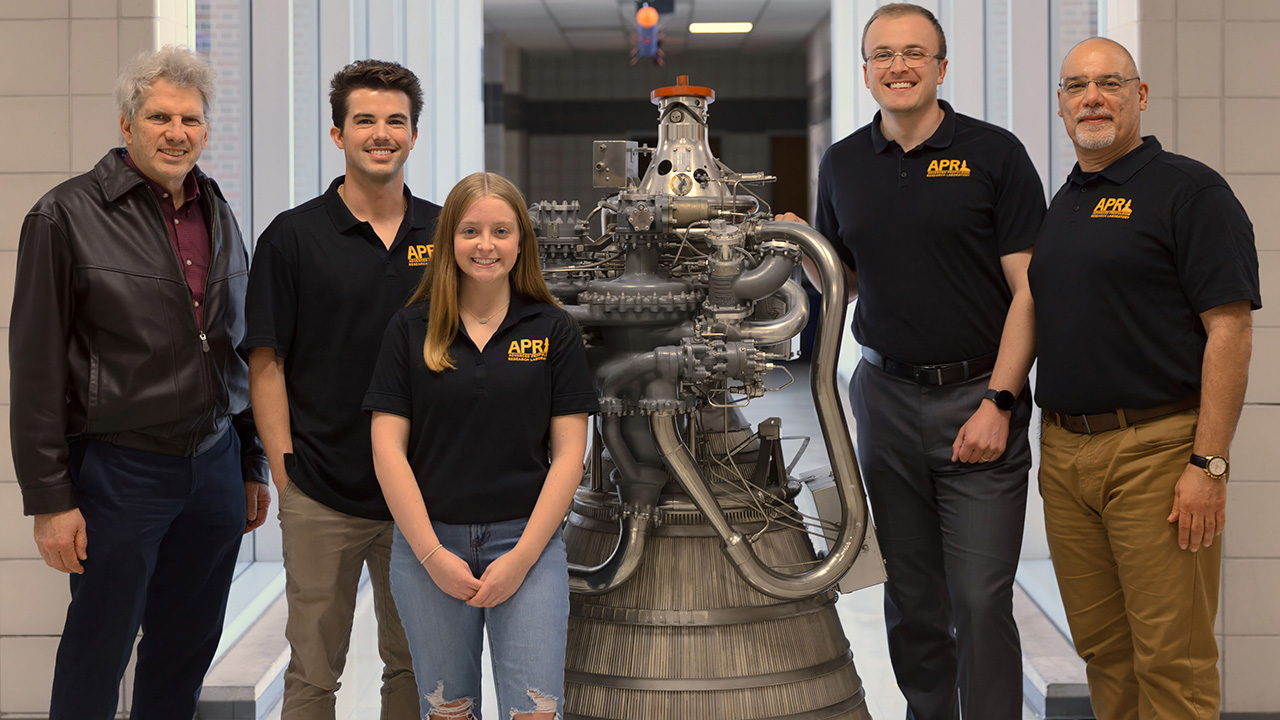Auburn’s Advanced Propulsion Research Lab and Altair acquire $1.25M AFWERX contract to advance vortex rocket engines
Published: Nov 25, 2024 8:20 AM
By Dustin Duncan
Auburn’s Advanced Propulsion Research Lab is teaming up with Research in Flight to improve the performance of cyclonic vortex engines that are being developed for use by the U.S. Air Force and commercial space companies such as Sierra Space.
Joe Majdalani, the Hugh and Loeda Francis Chair of Excellence in the Department of Aerospace Engineering, received $625,000, which is half of the contracted amount, to further his research into vortex engines.
Vivek Ahuja, ’13 aerospace engineering, and Roy Hartfield, Walt and Virginia Woltosz Professor in aerospace engineering, co-founded Research In Flight, which was acquired by Altair Engineering back in May. The company, located in Auburn, is dedicated to developing new aerodynamic and hydrodynamic analysis tools for aerospace engineering applications.
The Auburn team will take FlightStream® software created by Research In Flight (now Altair Engineering) and apply it to vortex engines to identify optimal conditions. Majdalani said studying vortex engine capabilities and stability limitations to provide optimal predictions previously took about two weeks for each test.
With FlightStream, those predictions will take about two minutes.
“A week becomes a minute,” Majdalani explained.
Majdalani, the principal investigator on the project, indicated that his team is tasked with developing analytical models for cyclonic flows, constructing computational models and studying the stability of different vortex engines.
Air Force and private space companies such as Sierra Space develop new design concepts that must be optimized to achieve top performance before being used in a launch. Moreover, vortex engine capabilities and stability limitations must be carefully investigated for in-space propulsion and deployment on manned spaceplanes and launch vehicles.
By using FlightStream,® Majdalani’s team can predict cyclonic flow performance and acoustic signature characteristics at a fraction of the time compared to previous methods. These models will enable users to rapidly predict the stability performance of thrust engines earlier in the conceptual design over a wide range of operating conditions.
“We are truly excited about this contract because not only does it enable us to support Sierra Space, our long-standing research partner, it will also allow us to work closely with the amazing Research In Flight team, which is led by Dr. Vivek Ahuja, a world-class software developer,” Majdalani said.
Majdalani’s work on cyclonic rocket engines began in 1996 when he was contracted by Orbital Technologies Corporation, now known as the Sierra Nevada Corporation (the parent corporation of Sierra Space), to develop a proposal on vortex-injection hybrid rocket engines for NASA Marshall.
He has continued to work with the Sierra team — led by Marty Chiaverini — to develop an advanced injection method for liquid rocket engines. A cyclonic flowfield can rapidly self-cool the engine’s heated walls without requiring additional cooling channels to reduce the wall temperature. Sierra’s patented vortex injection method produces a lightweight engine with improved payload capability and mission performance while increasing its efficiency and overall stability.
Media Contact: , dzd0065@auburn.edu, 334-844-2326
Cutline: Auburn University’s Advanced Propulsion research team stands near a cryogenic RL10 liquid rocket engine. The team is tasked with developing analytical models for cyclonic flows, constructing computational models and studying the stability of different vortex engines. Pictured from left to right are Roy Hartfield, Daniel Little, Emma Signor, Anthony Marcello and Joe Majdalani.



